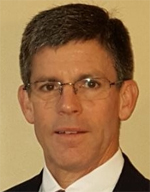6 CDMO Selection Tips From An Experienced Start-Up

By Louis Garguilo, Chief Editor, Outsourced Pharma

Does your process to select a CDMO emerge from within and without?
Ryan Crisman, cofounder and Chief Technical Officer, Umoja Biopharma, Inc., says it should.
“To begin with, it's always important for your selection model to have an internal expert who can ‘fact check’ the CDMOs,” Crisman advises.
Featured recently in these pages, Umoja is a clinical-stage company advancing a new cell-therapy approach to immunotherapy, specifically for solid tumors.

“Al Ritter came on as a consultant with his 35 years of experience in development and manufacturing of small molecules. He went out and did all our initial service-provider assessments,” says Crisman, who himself is an experienced biopharma facility professional.

Umoja was established in 2019, and a piece of Ritter’s early advice proved prescient:
For a U.S.-based company, keep partners close to home – meaning within North America.
That cornerstone guidance helped Umoja avoid the worse of the COVID and supply-chain challenges that soon transpired. “It was critical for control of our supply chains,” says Crisman.
Ritter also set an example for Umoja (and now Outsourced Pharma readers) to follow.
Crisman says:
“Al goes into CDMO discussions thinking of building a strategic relationship, and trying to understand, ‘What is the mission of this CDMO?’
“He’s taught us we must ensure we aren’t just a cog in the wheel, another revenue stream. He clarifies whether the CDMO is actually interested in troubleshooting, and working collaboratively.”
However, Crisman clarifies, “This isn’t a knock on those who aren’t. CDMOs know what is good for their business model, and what is not, just like the prospective client should.”
Obtaining this assurance of alignment is critical.
As well as advancing its own pipeline, Umoja’s mission includes potentially going out to CDMOs with designs of having some of those providers adopt Umoja’s novel approach and technology for lentiviral vector development.
They’ve been picking CDMOs as service providers, and soon as technology partners. First, Umoja is perfecting and de-risking that technology by building out its own facility.
Once that is accomplished, it will then require an intricate transfer to CDMOs, close cooperation and troubleshooting, and further learning together.
How will Umoja know which of these CDMOs will fit that bill?
Crisman says Ritter (and the experience of others in the company) has taught them if you ask the right questions, “you can actually figure out quickly what type of CDMO they are.”
“Already, we’ve learned there are really good, established CDMOs out there that want to be a partner, and some that see you as a dollar sign and prioritize – or de-prioritize – based on the size of the company. Those don’t last very long.”
Which brings us to our first four tips:
- Have an internal outsourcing expert (who can be a consultant); ensure the entire company learns from them.
- Stay as close to home as possible to mitigate supply-chain (and other) risks.
- Verify the CDMO’s “mission”; obtain an assurance of alignment with your goals.
- Accomplish this initially by asking the right questions, and thinking in terms of strategic partnerships.
- When necessary – considering all factors, e.g. funding, external expertise (or lack of), etc. – build your own facility as a component of our strategic plans.
Below we’ll describe two more tips:
- Select CDMOs based on your specific program needs, and their specific capabilities
- Verify CDMO track records with others; meet directly with CDMO project-team members to verify skills and longevity.
Who Passes The Exam?
In the development space, says Crisman, for us it’s been “quite a mix of big, small, new and more experienced CDMOs – with that caveat they are all located in North America.”
And not the relationship kind, but the actual chemistry involved with Umoja’s programs helps drive these selections. “We found the smaller shops had more of an established research arm ready to invest the time and effort to help us understand the chemistry,” he says.
In some cases, these smaller – more focused and specialized – CDMOs have unique analytical tools, “so we could look at the chemistry from different angles.”
Conversely, Crisman says, “The big CDMOs, especially during the recent supply-chain challenges, tend to have the upper hand in regard to more access to vital items, such as vials for drug products.”
So why not contract to get the best of both breeds? To de-risk various aspects of the outsourcing process, that’s what Umoja has been looking to do.
But in all cases, it’s been a solid consideration of the internals at Umoja that drive where and with whom to externalize.
Next, Crisman avers, when it comes to comparative price-shopping, “the entire CDMO world is highly competitive. The pricing ranges tend to be in the same ballpark.”
Therefore, price alone won’t ferret out many CDMOs from others – which adds importance to these enumerated tenets of the Umoja outsourcing strategy.
(And when there are notable price discrepancies, it’s important to learn why. Perhaps the CDMO didn’t fully understand the project, or you aren’t understanding all that is essential for ultimate success. It’s worth following up.)
So with price off the table (relatively), Crisman knows “it ends up with sponsors having to carefully access a CDMO’s history.”
One way to understand that track record is to independently ask other sponsors who have worked with a CDMO; another is to seek references directly from the CDMO – and follow up closely on those. (Another is to access our CDMO Leadership Awards, presented each year in April.)
Within that CDMO history, skilled worker availability and retention should be carefully noted; you can learn a lot by directly meeting those who would be working with you.
“The skilled-worker profile is something we are hyper-focused on,” says Crisman.
That … and all of the above.
